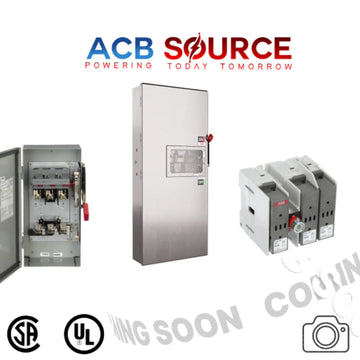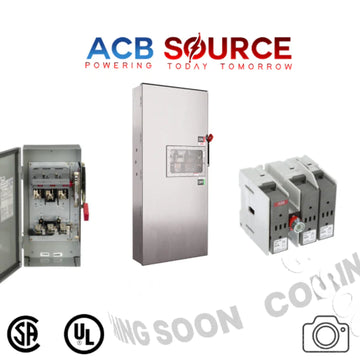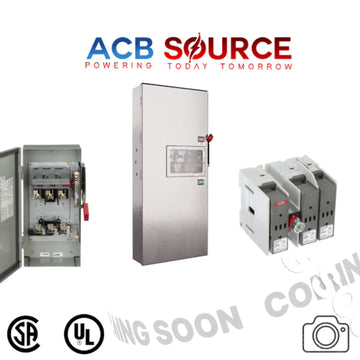Westinghouse breakers have been a cornerstone in electrical systems for decades, known for their reliability and performance. However, understanding the intricacies of these breakers is crucial for professionals in the electrical industry. In this comprehensive training session, we will delve into the features, operation, and maintenance of Westinghouse breakers, providing valuable insights for those seeking a deeper understanding of this integral component in power distribution systems.
Understanding Westinghouse Breakers
What Sets Westinghouse Breakers Apart?
Westinghouse breakers, produced by the Westinghouse Electric Corporation, have a long-standing reputation for quality and innovation. Their design incorporates advanced features that contribute to the efficient and safe operation of electrical systems. Key characteristics that set Westinghouse breakers apart include:
- Reliability: Westinghouse breakers are renowned for their robust design and reliable performance. This reliability is crucial in ensuring the continuous and uninterrupted flow of electrical power.
- Innovation: Over the years, Westinghouse has been at the forefront of technological innovation in the electrical industry. Their breakers often feature advanced technologies that enhance their functionality and make them suitable for a wide range of applications.
- Versatility: Westinghouse breakers come in various types and configurations, catering to diverse voltage levels and current ratings. This versatility makes them suitable for applications ranging from residential settings to industrial facilities.
Components of Westinghouse Breakers
- Circuit Breaker Mechanism:
The core of a Westinghouse breaker is its circuit breaker mechanism. This mechanism is responsible for the quick and reliable interruption of the electrical current in the event of a fault. Westinghouse breakers commonly use magnetic and thermal-magnetic trip mechanisms for effective circuit protection.
- Contacts:
Contacts in Westinghouse breakers play a critical role in establishing and interrupting the electrical circuit. High-quality contacts ensure minimal resistance during the flow of current and contribute to the breaker's overall efficiency.
- Arc Extinguishing System:
When a circuit is interrupted, an arc may form between the contacts. Westinghouse breakers incorporate advanced arc extinguishing systems to swiftly and safely extinguish this arc, preventing damage to the contacts and ensuring a reliable interruption of the current.
- Operating Mechanism:
The operating mechanism is responsible for opening and closing the contacts of the breaker. It can be manual, electrically operated, or equipped with a motor for remote operation. Understanding the operating mechanism is crucial for proper control and maintenance of Westinghouse breakers.
- Tripping Mechanism:
Westinghouse breakers are equipped with tripping mechanisms that respond to abnormal conditions in the electrical circuit, such as overloads or short circuits. The tripping mechanism ensures the rapid disconnection of the circuit to prevent potential damage.
Operating Westinghouse Breakers
- Normal Operation:
During normal operation, Westinghouse breakers allow the flow of electrical current through the contacts, facilitating the distribution of power to connected loads. The breaker remains in a closed position, ensuring the continuous supply of electricity.
- Tripping Operation:
In the event of a fault, the tripping mechanism is activated. This could be due to an overload, a short circuit, or other abnormal conditions. The tripping mechanism rapidly opens the contacts, interrupting the flow of current and isolating the faulty section of the electrical system.
- Closing Operation:
After a fault has been addressed and the necessary repairs or adjustments have been made, the Westinghouse breaker can be closed to restore the flow of electricity. The closing operation can be manual or remotely controlled, depending on the type of operating mechanism.
Maintenance and Troubleshooting
- Regular Inspections:
To ensure the continued reliability of Westinghouse breakers, regular inspections are essential. This includes visually inspecting contacts for signs of wear, checking for loose connections, and verifying the integrity of the arc extinguishing system.
- Testing the Tripping Mechanism:
Periodically testing the tripping mechanism is crucial to verify its responsiveness to abnormal conditions. This can involve simulating fault scenarios to ensure that the breaker can quickly and accurately disconnect the circuit when needed.
- Contact Resistance Measurement:
Measuring the contact resistance in Westinghouse breakers helps identify any issues that may affect the efficiency of current flow. High contact resistance can lead to overheating and should be addressed promptly.
- Oil Analysis (If Applicable):
For oil-filled Westinghouse breakers, analyzing the condition of the oil is a common maintenance practice. Oil analysis can reveal potential issues such as contamination or degradation, allowing for preventive measures to be taken.
- Documentation and Record-Keeping:
Maintaining thorough documentation of maintenance activities, test results, and any troubleshooting efforts is essential. This record-keeping aids in tracking the performance of Westinghouse breakers over time and facilitates a proactive approach to maintenance.
Applications of Westinghouse Breakers
- Residential Settings:
In residential settings, Westinghouse breakers are commonly used in distribution panels to protect individual circuits. Their reliability and versatility make them a preferred choice for ensuring the safety of electrical systems in homes.
- Commercial Buildings:
Westinghouse breakers find extensive use in commercial buildings for powering lighting systems, HVAC equipment, and other electrical loads. Their ability to handle varying current ratings makes them suitable for diverse applications.
- Industrial Facilities:
In industrial facilities, where the demand for electrical power is substantial, Westinghouse breakers play a crucial role in protecting machinery and equipment. Their robust design and advanced features make them well-suited for the challenging conditions of industrial settings.
- Utility Substations:
Westinghouse breakers are integral components in utility substations, where they contribute to the reliable distribution of power and the protection of transformers and other critical equipment.
Advantages of Westinghouse Breakers
- Proven Reliability:
Westinghouse breakers have a long history of proven reliability in various applications. This track record instills confidence in their performance, making them a trusted choice for electrical professionals.
- Versatility:
The versatility of Westinghouse breakers, with their ability to handle different voltage levels and current ratings, makes them adaptable to a wide range of applications in residential, commercial, and industrial settings.
- Advanced Technology:
Westinghouse breakers often incorporate advanced technologies, ensuring efficient operation, quick fault detection, and reliable interruption of the electrical circuit.
- Ease of Maintenance:
With a focus on user-friendly designs, Westinghouse breakers are often designed for ease of maintenance. This includes accessible components, clear documentation, and straightforward testing procedures.
- Global Support and Availability:
The widespread use of Westinghouse breakers globally ensures that support, spare parts, and expertise are readily available. This global presence contributes to the continued accessibility and reliability of Westinghouse breakers.
Conclusion
In conclusion, navigating Westinghouse breakers requires a comprehensive understanding of their components, operation, and maintenance. Whether used in residential, commercial, or industrial applications, these breakers are integral to the reliable and safe distribution of electrical power. Professionals in the electrical industry benefit from ongoing training sessions and a commitment to staying informed about advancements in Westinghouse breaker technology.
As technology continues to evolve, Westinghouse breakers are likely to incorporate even more advanced features, further enhancing their performance and adaptability. Staying abreast of these developments ensures that electrical professionals can leverage the full potential of Westinghouse breakers in powering the present and shaping the future of electrical systems.







